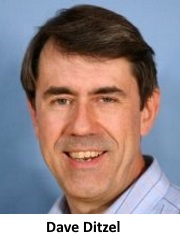



Feature Story
More feature stories by year:
2024
2023
2022
2021
2020
2019
2018
2017
2016
2015
2014
2013
2012
2011
2010
2009
2008
2007
2006
2005
2004
2003
2002
2001
2000
1999
1998
 Return to: 2017 Feature Stories
Return to: 2017 Feature Stories
CLIENT: ESPERANTO TECHNOLOGIES
Nov. 28, 2017: EE Times
Western Digital, Esperanto tip plans for chips
SAN JOSE, Calif. — Storage giant Western Digital announced that it will standardize on RISC-V processors and has invested in Esperanto Technologies, a startup designing high-end SoCs and cores using the open-source instruction set architecture. The two moves suggest that RISC-V has emerged as a viable — but not yet mature — alternative to ARM and the x86.
Long-term, WD expects that it could ship as many as 2 billion RISC-V chips a year inside its hard-disk and solid-state drives. Privately, the company also revealed that it is working on machine-learning accelerators for inference, probably related to its unspecified investment in Esperanto.
For its part, the startup tipped plans for a family of 64-bit RISC-V chips that will include:
“Having a major company like WD bet on the architecture is a huge boost for the RISC-V ecosystem, and having a startup try to take it to high-end products is a big deal because to date, RISC-V has been mainly in low-end microcontrollers for the IoT,” said Linley Gwennap, principal of market watcher The Linley Group.
 Esperanto has kept a tight lid on its plans to date, although its chief executive, microprocessor veteran David Ditzel, has been a fixture at RISC-V events for some time. Ditzel designed server processors at the former Sun Microsystems and startup Transmeta before doing a relatively short stint at Intel.
Esperanto has kept a tight lid on its plans to date, although its chief executive, microprocessor veteran David Ditzel, has been a fixture at RISC-V events for some time. Ditzel designed server processors at the former Sun Microsystems and startup Transmeta before doing a relatively short stint at Intel.
“I wasn’t going to do something unless it could be bigger than Transmeta — its get big or go home,” said Ditzel in an interview.
He declined to describe details of his products, their architecture, or even the company’s funding. However, he did give a few examples of his team, which includes Tom Riodan, a former Intel and MIPS processor designer who sold his startup QED to PMC Sierra.
“He was going to start his own RISC-V company, but we got together instead,” said Ditzel.
In addition, the startup snagged “a chief architect of the Sony Playstation 3. He was about to start work on the PS5, and when he heard about what we are doing, he said he wanted to join.”
Advisors include Berkeley professor emeritus David Patterson, who helped launch RISC-V, and Alan Eustace, a veteran senior engineer at Google, HP, and Digital Equipment. Although Ditzel declined to give numbers, the startup has engineers in Silicon Valley and Europe, at least 27 of whom will attend this week’s RISC-V workshop.
Esperanto’s staff includes former Intel specialists in floating-point and out-of-order design as well as circuit designers and physical layout experts. A compiler team already wrote a shader compiler to run high-end graphics jobs on its chips.
Return to: 2017 Feature Stories